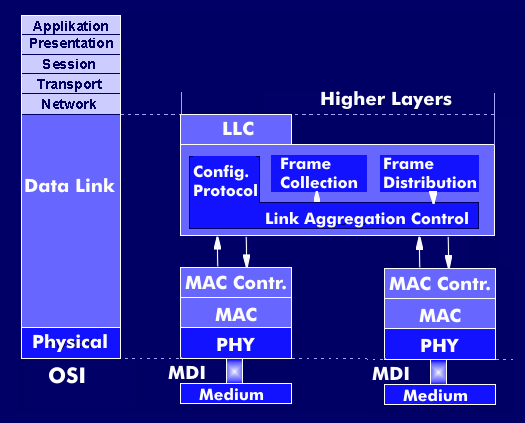link aggregation
The bundling or trunking of multiple lines is of great importance for the scaling of networks. For this application, IEEE has developed the 802.3ad standard under the term "Aggregation of Multiple Link Segments". Link aggregation is the parallel connection of several Ethernet links in large Ethernet networks. Previously, the term trunking was used for this.
The link aggregation layer (LACL) is inserted between the higher layers (or the LLC layer) and ensures that work can be carried out in parallel via several MAC columns. To do this, the data streams are split into several sub-streams. These are then transmitted via the individual MAC and physical layers in a point-to-point connection. The interconnected switches communicate with each other via the Link Aggregation Control Protocol( LACP).
On the one hand, this function allows line redundancy to be built up, i.e. it is possible to continue working with lower capacity if a line fails. On the other hand, the network administrator has the option of scaling bandwidth. If, for example, 100 Mbit/s is not enough, he can go to 2 x 100 Mbit/s and do without Gigabit Ethernet. An even finer gradation is not possible, since the standard provides for equal speeds, either 10 Mbps or 100 Mbps. It is designed for full- duplex transmission, supports Ethernet frames but not Token Ring frames.

